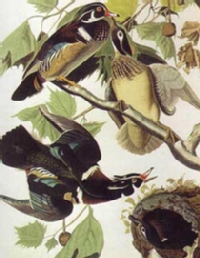 The St. Louis Mercantile Library
The St. Louis Mercantile Library
An Early Haven for Art in St. Louis
A Virtual Gallery and Guide to the Collections
With a List of Artists in St. Louis Before 1850
The Mercantile - An Environment for Art
In its earliest days St. Louis had few libraries and few galleries to preserve the monuments of art which its citizens could enjoy as a mark of the cultural growth of the fledgling metropolis. Surprisingly so, since the city was, due to its geographical position, at the center of a great historical movement - the settlement of half a continent was underway for all to see - which authors, journalists, engravers, lithographers and painters were busy documenting through stirring works of literature, poetry, and the fine arts.
From its beginnings, the Library sought to provide its rooms as a gallery for art as well as for books to its members - the early populace and citizenry of a frontier city. In many ways, the Mercantile was founded by business leaders not only as a general library for all readers, but also as an art museum, one of St. Louis' first and longest lasting, in which such merchants exercised a high degree of taste and knowledge in collecting art for the viewing public.
The books are yet to be written which will examine in detail how art in early American cultural institutions, i.e., those of learning, such as schools, early design academies, and libraries - was viewed and what the early mercantile classes were trying to achieve in their endeavors to promote a truly national, American art.
Art in St. Louis at the Mercantile
In such an early cultural setting as the Mercantile, art was a fluid commodity, viewed as it was with various emotions, from reverence to the merely decorative, with great excitement, to at times, indifference. It must have been collected, gathered, and presented here by the founders, these philanthropically-minded business leaders of a bygone age, as a conscious service to the community, much as the oldest books in the collection came to the library in a similar way - used, even touched, loved or possibly even hated, much as a well received volume, or a controversial one, was enjoyed or disliked by the Library's readers.
Often in the world of early resident artists in St. Louis, those wishing to advertise their skills, paintings were deposited for viewing, only to be reclaimed again a few days or even years later, and sent to an eventual buyer. Many special exhibitions were presented by the Library in its earliest days, some to raise funds for various causes. Library leaders, such as James Yeatman and Henry Bacon, were deeply interested in the fine arts, and distinguished Western connoisseurs and patrons in their time, and these individuals infused the Mercantile with their art-loving spirit. The Library, in promoting the culture of the fine arts, was advertising the worth of the varied array of painters and sculptors, engravers and other artisans who passed through its doors.
The Mercantile was often the recipient of a gift of art, or of a long term loan which was never recalled (this was an age far in advance of modern museum registrar's files) and almost by default the founders frequently saw to it that paintings of great merit were preserved which otherwise would have been lost to subsequent generations. Western and literary subjects provided suitable emblems for the book collections, fine symbols which graced these halls and still grace them, for generations in the past, present, and future.
The Mercantile Library and Western Art
How fortunate for the Mercantile too, that it was founded in a city that fostered so many artists dedicated to documenting the growth of Missouri, the American West, and the Nation. At one time old masters from Europe, suits of armor, heraldic medallions and fine ceramics filled the walls, next to a portrait of an Indian chieftain, or the scene of the heroic exploits of the pioneers, these latter being given equal pride of place in the reading room galleries. Thus, a figure from the Renaissance in marble, or a Grecian copy could be placed next to the scene of hostile natives attacking a Union Pacific train on the plains. The portrait of an American explorer of the West, like William Clark, could be presented next to a great German scientist's portrait, such as that of Alexander von Humboldt. Washington's bust (a man who dreamed of touring the West, but never did) was viewed in the old days next to a portrait of Thomas Hart Benton, a senior-statesman who lived in the West of his young manhood, and who pointed to the Pacific in a great speech delivered to grasp the concept of a West which led, even to the gates of China.
In respecting the traditions of past artistic currents, the founders of the Library, these great patrons of the arts in their own right, helped foster a new American artistic epoch - all within the context of a great city's own history and its first great library.
